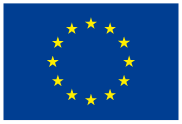About SUSMAGPRO – Challenges
Why should we care about building a circular economy for rare earths?
Challenges
Rare earth magnets based upon neodymium-iron-boron (NdFeB) are one of the most crucial components needed in high-performing and efficient products of European industries such as automotive, aerospace, e-mobility, wind power and consumer goods. However, less than 10% of current EU demand for NdFeB is met by EU production as mining of rare earths causes significant environmental damage and far more NdFeB magnets are needed than currently manufactured. Thanks to its vast amount of NdFeB resources, a single country in the world currently controls the market of rare earth materials and magnets; a quasi-monopoly which can result in high price volatility and supply risk. And demand is rising!
Check out this video by German broadcaster Deutsche Welle (DW) for an overview on the social, environmental and geopolitical challenges connected to Rare Earths!

It is therefore necessary to consider recycling NdFeB from existing products, rather than seeking more primary sources and producing more waste. It has been estimated that approximately 2,000-3,000 tonnes per year of NdFeB will be available for recycling by 2020, which presents a significant opportunity. But currently, the only way to recover end of life (EOL) magnets from waste streams of electric and electronic equipment is by shredding, recycling by chemicals, and remanufacturing by pyrometallurgical routes, which is expensive, energy intensive and not very environmentally friendly. This is where SUSMAGPRO comes into play. Nineteen European organisations decided to join forces and started the project in June 2019 to address these challenges. Learn more about the solutions SUSMAGPRO offers!
